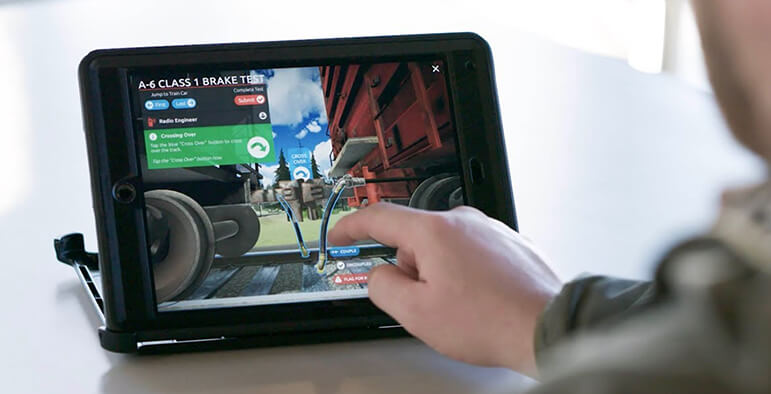There’s a fairly pervasive myth about technology that’s plaguing operations and maintenance teams– and it goes something like this:
“We cannot transition to more sophisticated training technologies because our workers find technology intimidating,
so it will not be worthwhile.”
This is just not true. And the truth is actually very much the opposite: Workers are using technology in every part of their daily lives and they function just fine with it. The smartphones and apps they are using today require precisely the same skills they need to manipulate simulation based training apps.
So why the disconnect?
Looking at Today Through a Digital Lens
We (businesses in general) are getting in our own way when we talk about advanced technological capabilities. Technology has advanced so rapidly in the past ten years and has become so ubiquitous and accepted, in fact, that it is now taken for granted.
 Do you think about how advanced it is to be able to use your phone for spoken driving directions? Asking Siri or Alexa to order something for you? To have exceptionally informed information on any topic available for free, with a quick search online? And having smartphones – these handheld objects possessing the processing power once attributed to super computers – that you carry around in your pocket?
Do you think about how advanced it is to be able to use your phone for spoken driving directions? Asking Siri or Alexa to order something for you? To have exceptionally informed information on any topic available for free, with a quick search online? And having smartphones – these handheld objects possessing the processing power once attributed to super computers – that you carry around in your pocket?
But this general acceptance and comfort with technology has not carried over to how we think about training, which is seen as something much more futuristic than it is. And this is not to say that simulated training is not advanced. It is! But it’s nothing outside of the norm of our everyday experiences with technology. The fact of the matter is this: We’ve lost sight of how technologically advanced our lives have already become.
Let’s take a look at what simulation based training entails and how your operations and maintenance technicians are already performing the exact tasks required to successfully adopt it . . .
Digital Tasks That Your Workers Have Already Mastered
How is digital familiarity pervasive in workers’ everyday lives? Most adults, young and old, have at least some level of comfort with either a smartphone or computers – likely both.
- Select items on a screen (from making online purchases and selecting things)
- Navigate from screen to screen (from visiting any website online and exploring for information)
- Drag and drop items from one place to the next (from using any sort of game on a phone or moving things around on a phone to organize apps)
- Zoom in and out (to see small things on a phone or tablet)
- And they certainly aren’t intimidated by watching something on a screen!
On a humorous note – the most challenging task will probably be getting Android folks to use Apple and the reverse. And even that takes minutes.
And now to see that in action, to provide further proof of how simple it is to navigate:
Deconstructing the Intimidation Mindset
Virtual simulation technology offers O&M a way to consistently train workers anytime, anywhere by taking advantage of the skills they already have today. It’s amazingly intuitive and provides personalized feedback and additional training based on a worker’s individual needs. This is immensely valuable to any company.
This ability to train and retrain as needed, and on the go or in the field, saves companies an incredible amount of money long-term. It cuts down on recurring safety problems and does not require employees to either miss work for training (to travel elsewhere) nor does it require businesses to take valuable, breakable equipment out of commission to perform training sessions on!
And then there are scenarios that you hope will never happen, as technicians have only been able to read about them up until now. With a simulation, they can practice responding to dangerous situations that they may never encounter, but could mean life or death if they do. That kind of ROI is priceless.
Technology on its own is not intimidating, but the way businesses feel about it is. And the way they communicate it to workers causes unnecessary anxiety around its use. It’s time to deconstruct that fear and help your company digitally transform along with your competitors. And we’re here to help you do it! You can start by reaching out here.



